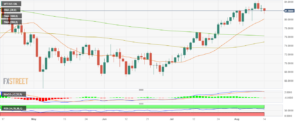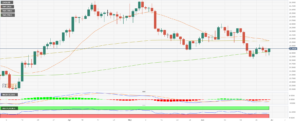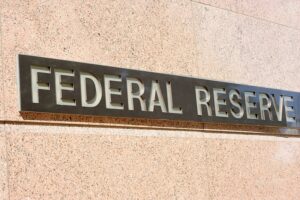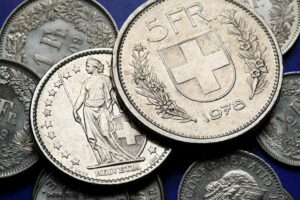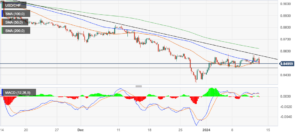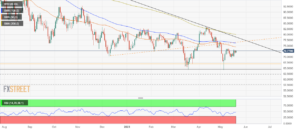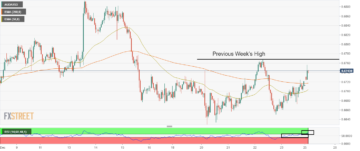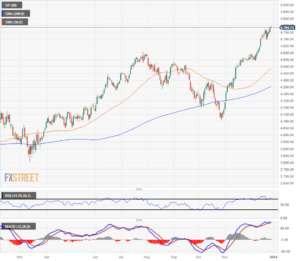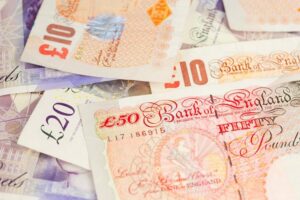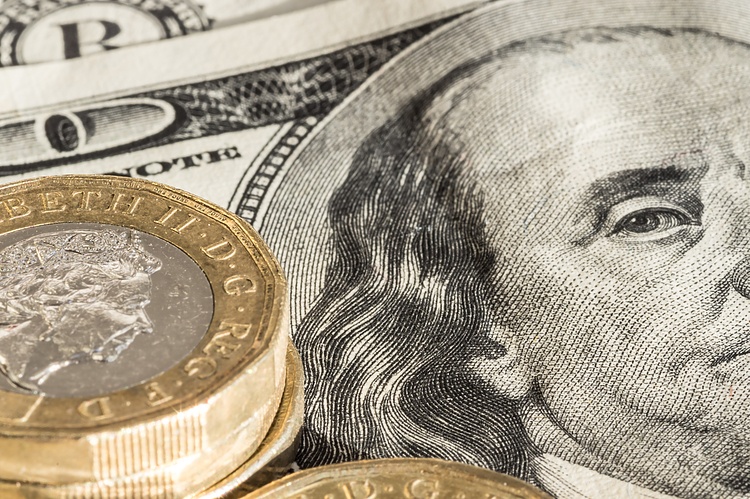
- GBP/USD attracts some buyers on Friday and draws support from subdued USD price action.
- The BoE’s aggressive rate hike fueled recession fears and could act as a headwind for the GBP.
- The hawkish Fed should limit the USD losses and cap the pair ahead of the US PCE Price Index.
The GBP/USD pair edges higher during the Asian session on Friday and recovers further from over a two-week low, around the 1.2590 region touched the previous day. Spot prices currently trade around the 1.2620 area, up just over 0.05% for the day, and for now, seem to have snapped a two-day losing streak, though any meaningful upside still seems elusive.
The US Dollar (USD) pauses after registering strong gains over the past two days and rising to its highest level since June 13, which, in turn, is seen as a key factor lending some support to the GBP/USD pair. That said, firming expectations for more interest rate hikes by the Federal Reserve (Fed) should continue to act as a tailwind for the Greenback. In fact, Fed Chair Jerome Powell reiterated this week that the US central bank could hike rates at least two more times this year.
Adding to this, the upbeat US macro data released on Thursday reaffirmed bets for a 25 bps lift-off at the next FOMC policy meeting on July 25-26. This, in turn, remains supportive of elevated US Treasury bond yields and favours the USD bulls. Apart from this, growing concerns that the UK economy is heading for recession, especially after a surprise 50 bps rate hike by the Bank of England (BoE) last Thursday, might further contribute to capping gains for the GBP/USD pair.
Traders might also refrain from placing aggressive bets and prefer to wait on the sidelines ahead of Friday’s release of the US PCE Price Index, due later during the early North American session. The core reading, which is the Fed’s preferred inflation gauge, will play a key role in influencing market expectations about the future rate-hike path. This, in turn, will drive the USD demand and help investors to determine the next leg of a directional move for the GBP/USD pair.
Hence, it will be prudent to wait for strong follow-through buying before confirming that the recent corrective decline from the vicinity of mid-1.2800s, or over a one-year high touched earlier this month, has run its course. Nevertheless, the GBP/USD pair remains on track to end in the red for the second successive week, though has managed to hold comfortably above technically significant Simple Moving Averages (50, 100 and 200-day SMAs).
Technical levels to watch
- SEO Powered Content & PR Distribution. Get Amplified Today.
- PlatoData.Network Vertical Generative Ai. Empower Yourself. Access Here.
- PlatoAiStream. Web3 Intelligence. Knowledge Amplified. Access Here.
- PlatoESG. Automotive / EVs, Carbon, CleanTech, Energy, Environment, Solar, Waste Management. Access Here.
- BlockOffsets. Modernizing Environmental Offset Ownership. Access Here.
- Source: https://www.fxstreet.com/news/gbp-usd-trades-with-a-mild-positive-bias-above-12600-upside-potential-seems-limited-202306300254
- :has
- :is
- $UP
- 1
- 100
- 13
- 25
- 50
- a
- About
- above
- Act
- Action
- After
- aggressive
- ahead
- also
- American
- and
- any
- apart
- AREA
- around
- AS
- asian
- At
- Attracts
- Bank
- BE
- before
- Bets
- bias
- BoE
- bond
- Bond yields
- Bulls
- buyers
- Buying
- by
- cap
- central
- Central Bank
- Chair
- Concerns
- continue
- contribute
- Core
- could
- course
- Currently
- data
- day
- Days
- Decline
- Demand
- Determine
- Dollar
- draws
- drive
- due
- during
- Earlier
- Early
- economy
- elevated
- end
- especially
- expectations
- fact
- factor
- fears
- Fed
- Fed Chair
- Federal
- federal reserve
- FOMC
- FOMC policy meeting
- For
- Friday
- from
- fueled
- further
- future
- Gains
- GBP
- GBP/USD
- Greenback
- Growing
- Have
- Hawkish
- Heading
- help
- High
- higher
- highest
- Hike
- Hikes
- hold
- HTTPS
- in
- index
- inflation
- influencing
- interest
- INTEREST RATE
- INTEREST RATE HIKES
- Investors
- IT
- ITS
- jpg
- July
- june
- just
- Key
- key factor
- Last
- later
- least
- lending
- Level
- levels
- LIMIT
- Limited
- losing
- losses
- Low
- Macro
- managed
- Market
- meaningful
- meeting
- might
- mild
- Month
- more
- move
- moving
- moving averages
- Nevertheless
- next
- North
- now
- of
- on
- or
- over
- pair
- past
- path
- pce
- placing
- plato
- Plato Data Intelligence
- PlatoData
- Play
- policy
- positive
- potential
- prefer
- preferred
- previous
- price
- PRICE ACTION
- Prices
- Rate
- Rate Hike
- rate hikes
- Rates
- Reading
- reaffirmed
- recent
- recession
- Recovers
- Red
- region
- registering
- release
- released
- remains
- Reserve
- rising
- Role
- Run
- s
- Said
- Second
- seem
- seems
- seen
- session
- should
- significant
- Simple
- since
- SMAs
- some
- Spot
- Spot Prices
- Still
- strong
- support
- supportive
- surprise
- Tailwind
- technically
- that
- The
- the Fed
- The Future
- the UK
- this
- this week
- this year
- though?
- thursday
- times
- to
- touched
- track
- trade
- trades
- treasury
- TURN
- two
- Uk
- Upside
- us
- US Central Bank
- US Dollar
- US Treasury
- USD
- wait
- week
- which
- will
- with
- year
- yields
- zephyrnet

